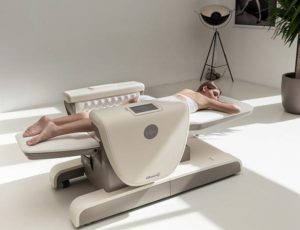Touchless spas

Missing the spa, but not ready to be in close quarters with anyone yet? Touchless spas are on the rise. They provide services like no-touch facials, relaxation pods, and dry hydrotherapy massages.
Virtual fitness
Virtual fitness classes were already gaining in popularity pre-COVID. This made them well-positioned to take advantage of the need to stay fit while apart. Virtual fitness classes provide access to a community and real-time or asynchronous instruction.
Immune health
The idea is that the immune system can’t be boosted, but simply optimized to work as effectively as possible. Incidentally, sales of elderberry have skyrocketed. Elderberry and other superfood immune products are now almost impossible to find.
Breathwork
Deep breathing is simple, free, and easy to take anywhere. Both research and anecdotal experience emphasize the importance of connecting to your breath. while breathwork and mindfulness are powerful ways to reduce stress.

Mindful eating
Time spent at home has led some to gain weight, affectionately called the COVID-19. Although mindful eating was on everyone’s mind pre-pandemic, more time spent at home is making at-home meal time more frequent and more of a ritual.
Sleep hygiene
Shelter-in-place gave many of us several hours a day of commute-time back, which was a welcome change. But people thrive on routine, and not having to take kids to school or avoid rush hour madness affects our sleep schedules. Endless days brought us a greater awareness of circadian rhythms, sleep quality, and the effects of sleep deprivation.
Functional foods
In 2021, we’re not giving lazy food any attention — it’s got to be good and good for you. There’s a growing trend towards functional foods. Think calcium added to orange juice or soluble fiber in oatmeal. It’s part of an overall trend towards more thoughtful nutrition choices.
Mental fitness
If there’s one good thing about the COVID-19 pandemic, it’s that it took the stigma off of mental health conversations. It’s now more acceptable and understandable to reach out for mental health support. This might include coaching, therapy, or even taking a mental health day from work.
Meditation apps
Anyone with a smartphone likely has one meditation apps installed. There is an endless variety of apps, with a plethora of cool features, and options in every price range. This makes meditation apps an easy and accessible way to practice mindfulness.
Self pleasure
Yep, we’re talking about masturbation. Since social distancing put a cramp in dating, self pleasure has become a new way to release tension. It also boosts nitric oxide (feel-good chemicals), and safely keeps your sex life vibrant. The market is debuting new toys that promote a more mindful, healthy, and inclusive experience. Not to mention, female-owned companies producing toys designed by female researchers.
Outdoor activities
More time spent indoors makes fresh air more appealing. Dining al fresco and working out outside are gaining popularity. Outdoor hobbies like gardening, tennis, sailing, and basketball are seeing more interest. They involve sunshine and don’t involve a screen.
Tracking stress
Stress is at new highs and affecting a record amount of the population. The fitness trackers now document physiological responses to determine how stressed out an individual is and when spikes occur. This provides individuals new insight into their daily routines.
Adaptogens
The newest addition to the line of superfoods are adaptogens. Known for their stress-busting properties, adaptogens like ashwagandha and rhodiola, help augment immunity, impact the release of cortisol in the body, and improve your resistance to the physical and emotional effects of stress. Although they’re enjoying their time in the spotlight, adaptogens were first identified by a researcher back in 1947.
Cooking
Even those who have no aptitude in the kitchen are cooking more lately. Meal kits are simplifying the art of cooking. But for those who prefer to source their own ingredients, homes are turning into herb gardens, kombucha breweries, and sourdough bakeries.
Although inspired by the pandemic, these health and wellness trends reflect long-term conversations and changes in society. When we look at where people are spending their money and putting their time, we get a good idea of what their priorities are — and what their personal definition of wellness is.


